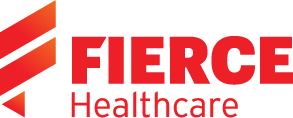
Eric Wicklund
Editor
[email protected]
As the coronavirus pandemic continues to wreak havoc on the economy, businesses and schools are taking a look at telehealth to help manage “return to” strategies.
While connected health has long played a part in business health plans and school health programs, the COVID-19 crisis has turned the spotlight back onto direct-to-consumer and asynchronous platforms that allow people to connect with providers on demand. Businesses, schools, even government offices want to use those platforms to screen employees and students before they leave home and to quickly identify and treat those who show up sick.
“Ensuring a healthy and safe workforce actually starts ahead of showing up at the office,” says Kristen Valdes, founder and CEO of b.well Connected Health, one of dozens of connected health companies who have pivoted during the pandemic to launch platforms. “It’s helping employees to attest to the fact that they have not been exposed, that they are not symptomatic. Or if they were previously infected, that they are cleared to return to work.”
“Providing solutions to workers from a digital perspective also enables them to have clear instructions on how to present into the office,” she adds. “So is there a specific door that they should enter? Do they need to have their temperature screened upon entry? Are there certain markings on the floor or walls that they should follow in getting to their desk or their office environment? Are there policies around how many people can be in any one place, whether it’s getting coffee in a kitchen area or in a conference room? Is gathering appropriate?”
This also gives providers and payers an opportunity to reinforce the value of telehealth and mHealth services beyond the pandemic and back-to work and school programs, shifting the focus from identifying a potential illness to offering on-demand health and wellness services.
For Providers, A Community Service
As health systems, hospitals and medical practices look to recover from the stresses of the coronavirus pandemic, some see back-to-work and school programs as a means of re-engaging with the community. Many, if not all, were forced to shut down or severely curtail in-person care during the height of the crisis, and these programs offer a chance to reconnect with the public.
“Health systems should be poised to provide expert resources and clinical knowledge, including sophisticated infection control processes and procedures to guide employers and schools through the overwhelming amount of information and often conflicting guidelines available in a hyper dynamic landscape,” says Lori Japp, PA-C, vice president of urgent care and employer solutions for Colorado’s UCHealth.
Japp says healthcare providers can create virtual clinics in businesses and schools, allowing management to screen employees or students coming into the facility and triage anyone who might exhibit signs of infection. They can also help set up remote patient monitoring programs to treat those workers and students who are sent home.
In addition, those telehealth platforms can be used to treat other concerns as well. This is especially important as providers look to restart primary care, chronic care management and elective services that have been delayed or ignored.
“Our virtual clinics allow employers and academic administrators access to timely on-site intervention for common situations such as workplace injuries, illness, and other urgent care needs without having to send the employee or student to another facility for care,” Japp says. “In addition to being on-site, these services can be accessed remotely and virtually, synchronously and asynchronously.”
Japp says the changing nature of the pandemic makes it important for businesses and schools to partner with health systems, so as to gain access to the latest information on diagnosis and treatment.
“The landscape is continuously changing with new research, guidance, policies and procedures, making it prohibitive for a small- or medium-size business or school to keep up in the context of a possibly unknown financial future for both employers and universities,” she says. “Allocation of resources is changing in the workplace with more employees and students working remotely, which changes workplace dynamics.”
In the future, she expects health systems to expand their testing capabilities and RPM programs to not only avert another pandemic, but to help businesses and schools maintain a healthy workforce and stay ahead of seasonal problems like the flu.
Synchronous versus asynchronous telehealth
Asynchronous, or store-and-forward, telehealth enables two parties – patient and provider or provider and provider – to exchange information and images on an online platform at their convenience. It differs from synchronous telehealth in that the latter occurs in real-time, often on an audio-visual platform.
Integrating Back to Work Telehealth Into Health Plans
Payers are also gearing up to help members ease their way back into work and school.
“We see a real advantage in having the right care available at the right time,” says Diane Wolfenden, a regional vice president for Michigan-based Priority Health. “Telehealth gives us an opportunity to be more innovative, and to create access points that people prefer.”
Learning lessons from COVID-19, health plans large and small are pivoting toward healthy workplace initiatives that emphasize on-demand virtual care – not only for primary care services, but also behavioral health. Some studies have noted that access to mental health services will be even more necessary as people deal with the stress and anxiety of returning to the office, factory floor, store or school.
With telehealth and mHealth, Wolfenden says, health plans also have the opportunity to communicate more often with their members.
“You can’t just send out an e-mail or an article and say ‘That’s good,’” she says. “Accessibility is going to be important, whether we’re in a pandemic or not.”
By focusing on back-to-work and school programs, payers can increase their touch points with members, first focusing on testing and on-demand access to care. Those conversations can then evolve into health and wellness advice, appointment and medication reminders, even discussion about societal and social factors – the so-called social determinants of health – that can affect long-term health.
“During COVID we were (focusing on) messages on the need to not put off or cancel healthcare, and on offering support, especially in behavioral health,” Wolfenden says. “Now we can use those (channels) to keep the conversation going, improve those touches and boost engagement.”
Creating a New Market for Connected Care
Telehealth vendors are also pivoting to address the need for back-to-work programs. Some have fine-tuned asynchronous, orstore-and-forward, telemedicine platforms that allow employees to fill out a questionnaire at home, after which they’re directed to the appropriate care – a telehealth visit, scheduling for an in-person appointment, or resources that might include directions to the nearest COVID-19 testing center or information on vaccines, health plan benefits, even mental health services
For companies new to the idea of offering telehealth, this opens the door to a wide range of preventive health and wellness services.
“The important thing is providing choice,” says Valdes, of b.well Connected Health. “More and more employers are able to offer those choices. So if I am someone who has indicated that stress is my biggest overall health concern, I may be interested in trying out a mindfulness and meditation app to control anxieties. Or, I might want a telehealth visit with a behavioral health specialist where I can actually talk one-on-one with someone without taking time off work or sitting in a physician office. And therefore, we can use consumer likelihoods and preferences to provide that combination of in-person virtual and digital care. Everything from digital therapeutics like Headspace or Calm or Ginger for telehealth. That’s how we enable people to engage in their overall health from work or from home.”
This also addresses a trend seen in telehealth before COVID-19 surfaced: the need to tailor platforms to individual needs.
“I think a common mistake is providing a one-size-fits-all solutions,” she says. “We are individuals, each one of us, with our own preferences and our own needs. So if you said to a population, ‘We want you to use this telemedicine or this test or this location,’ there are going to be people who don’t agree with that.”
“So a lot of mistakes and incorrect assumptions are assuming that an entire population will follow one program,” Valdes adds. “And that’s why choice is so important. Employers really need to think about providing optionality. Don’t think about one solution provider and one program, think about putting together a program that offers choice that gives that one centralized launching point through a central platform so they know that it’s supported by the organization as a whole.”
Making Telehealth Work for Returning Employees
To be sure, business and schools – and everyone else, for that matter – are dealing with situations they haven’t encountered before. Few, if any, have had to implement programs that test and substantiate one’s health before they leave home.
Telehealth and mHealth tools give them that opportunity, as well as the freedom to design a plan that meets their needs now and well into the future.
“Every employer is different,” Valdes points out. “Some employers have essential personnel that must return. Others have entire populations of people who can work from home remotely for an indefinite period of time. Let’s go back to the example that I gave around when you show up to work, are you required to have a mask? Will one be provided? Are you required to sanitize and get your temperature taken or not? It’s very difficult for providers and payers to configure and customize these programs specific to an employer.”
“And each employer also has specific local and state mandates that they have to follow in addition to federal mandates,” she concludes. “So it’s important to know that whether you partner with a healthcare provider or a payer, or you build your program on your own, that you have the needs of your program defined that are specific to your own organization and that whoever develops your program has the ability to customize and very quickly also change. Because requirements are changing, as you know, sometimes day by day when it comes to COVID.”






